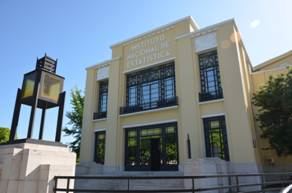
The results for 2009 regarding the overall index of regional development show that only four NUTS 3 level regions stood above the national average: Grande Lisboa (Lisboa NUTS 2 region), Cávado and Entre Douro e Vouga (Norte NUTS 2 region), Baixo Vouga (Centro NUTS 2 region). The performance of Grande Lisboa, clearly more positive than all the others, results from a position above the national average in the three components of development in which the overall index of regional development is structured – competitiveness, cohesion and environmental quality.
Regarding competitiveness, four regions stood above the national average: Grande Lisboa, in a clear way, Grande Porto, Baixo Vouga and Entre Douro e Vouga. In this index, the more favourable performances belonged to the metropolitan territories centred in Lisbon (Grande Lisboa and Península de Setúbal) and in Porto, spreading, in this last case, to the sub-regional valleys (Grande Porto, Entre Douro e Vouga, Baixo Vouga, Ave e Cávado). As for cohesion, the index displays a more balanced country than the one resulting from the competitiveness index – half of the regions showing a performance above the national threshold – with the Mainland centre sub-regions showing more cohesion than the Northern and Southern sub-regions and the autonomous regions. In what concerns environmental quality, the results suggest a reversed territorial pattern in relation to competitiveness – the coast showing, in general, less environmental quality. Serra da Estrela was the region with the higher environmental quality.
In 2009, the most frequent regional profile, in which 11 Portuguese NUTS 3 level regions were (around a third of the total), was of less competitive and cohesive territories than the national average but with more environmental quality than the national average, leading to an overall regional development below the national average.